Search the Blog
Categories
- Books & Reading
- Broadband Buzz
- Census
- Education & Training
- General
- Grants
- Information Resources
- Library Management
- Nebraska Center for the Book
- Nebraska Memories
- Now hiring @ your library
- Preservation
- Pretty Sweet Tech
- Programming
- Public Library Boards of Trustees
- Public Relations
- Talking Book & Braille Service (TBBS)
- Technology
- Uncategorized
- What's Up Doc / Govdocs
- Youth Services
Archives
Subscribe
Category Archives: Information Resources
Reading For Change: Anti-Racism Titles in Our Book Club Kit Collection
Earlier this week, the New York Public Library’s Schomburg Center for Research in Black Culture posted their Black Liberation Reading List. This is among many anti-racism reading lists publicized in recent days (here, here, and here) but I’m choosing to highlight this list because the Schomburg Center has focused on the Black experience, history, and culture for 95 years. Their list of 95 books includes both fiction and nonfiction.
If your patrons or book club groups are interested in these titles, we have a selection of them in our Book Club Kit collection:
- The Autobiography of Malcolm X by Malcolm X
- The Bluest Eye by Toni Morrison
- I Know Why the Caged Bird Sings by Maya Angelou
- Just Mercy by Bryan Stevenson
- A Raisin in the Sun by Lorraine Hansberry
- Their Eyes Were Watching God by Zora Neale Hurston
- The Underground Railroad by Colson Whitehead
- The Warmth of Other Suns by Isabel Wilkerson
You can find these books and similar titles for all ages on our Book Club Kit page: http://nlc.nebraska.gov/ref/bookclub/, by choosing “Black lives” in the Genre drop down menu.
We have also gathered a number of resources for library patrons and the general public to learn about social issues on NebraskAccess.
Niche Academy is Open!
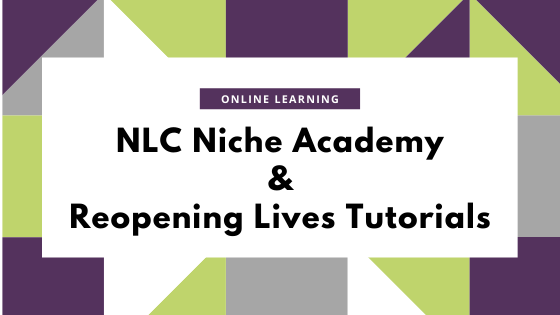
Two new online learning resources are now available!
First, the Nebraska Library Commission Academy is available to librarians as a thirty-day trial through Niche Academy. Lessons include topics such as:
- Code of Ethics for New Directors
- 10 Strategies for Community Organizing in Libraries
- 2020 United States Census
- Virtual Programming: Working with Presenters and Performers
- Research Essentials
Please check it out and let me know what you think! Each lesson is eligible for 1 CE credit for those enrolled in the Nebraska Public Librarian Certification program, just submit a CE Activity Report form when completed.
Second, the Reopening Lives Academy is a collaborative project between Niche Academy and librarians all over the United States to help answer patron questions as libraries work on reopening.
…many of us are anticipating a surge of patrons with questions about unemployment, taxes, and financial resources. We anticipate questions about public and personal health, and how the CARES act (and other legislation) will affect or help small businesses and entrepreneurs.
Niche Academy
These short tutorials are intended to help librarians and patrons answer these many different questions and provide quick resources with quality information on topics such as COVID-19, wearing masks, mental health, and writing resumes.
If you want to learn more about the collaborative project (or are interested in participating), there is more information posted on the Niche Academy blog.
2019 Public Library Survey Data is Now Available
 The 2019 FY public library survey data is now available on the NLC website. This is preliminary data (meaning that it has not yet been certified by IMLS) so keep in mind that it is subject to change. Thanks to all of you who submitted your statistics. Historical data (back to 1999) is also available on our website. The next survey cycle begins in November, but you should be collecting those statistics now. If you are a new library director, check out the Bibliostat guide.
The 2019 FY public library survey data is now available on the NLC website. This is preliminary data (meaning that it has not yet been certified by IMLS) so keep in mind that it is subject to change. Thanks to all of you who submitted your statistics. Historical data (back to 1999) is also available on our website. The next survey cycle begins in November, but you should be collecting those statistics now. If you are a new library director, check out the Bibliostat guide.
Reopening Your Library During the Pandemic

Is your library reopening to the public, or looking for guidance on reopening?
We’ve compiled recommendations and guidance from local and national organization, as well as example of policies and procedures being used by other Nebraska libraries here: http://nlc.nebraska.gov/libman/pandemic4libraries.aspx
If you’ve not yet told us that your library is reopening or modifying services for the pandemic, please fill out our form: https://docs.google.com/forms/d/e/1FAIpQLSe5AurxbSHsu5gy5sig7uHWkkQYeRG3EfT7l2ArfmbPTtlx-A/viewform.
A spreadsheet of Nebraska libraries closing, reopening, and modifying services can be found here: https://docs.google.com/spreadsheets/d/e/2PACX-1vQhzPpcpf_BAB_7wbDegLdjvfFX84AbGgRVAcIzrp-DYBIJUnKIaake5d1jKIRcFVW4qTPVwchtK5SV/pubhtml
And don’t forget our other resources for libraries and their patrons during this time: http://nlc.nebraska.gov/libman/pandemic.aspx
The Central Plains Libray System (CPLS) has resources too!
http://libraries.ne.gov/cpls/
Posted in General, Information Resources, Library Management
Tagged covid-19, pandemic, reopening, reopening plan
Leave a comment
Four Ways New Technology Is Revolutionizing the 2020 Census

From scribbled answers in 1790 to online responses in 2020, innovation has always been part of the Census. The Census Bureau has always been a leader in using, adapting and developing new technologies, but the 2020 Census will be the most sophisticated and high tech yet.
The census began in 1790 with collected information handwritten by U.S. Marshals visiting outposts in every corner of the new nation. Every decade since, the ways the U.S. Census Bureau has tried to meet its goal of counting every person living in the United States have undergone changes as dramatic as the growth of the nation itself.
Through the centuries, the decennial count progressed from in-person collections of handwritten answers to mass mailings of paper questionnaires in 1970. Among other changes along the way: creation of an electrical punch card tabulator for the 1890 Census and the first use by a government agency of the world’s first modern computer – the UNIVAC 1 – for the 1950 Census. It was developed by engineers John W. Mauchly and J. Presper Eckert, whose corporation was a division of Remington Rand.
In the previous century, Herman Hollerith, a former Census Office employee, invented a punch card tabulating machine used by the Census Bureau from the 1890 Census forward. Hollerith founded the Tabulating Machine Company, which eventually became International Business Machines (IBM).
America Counts spoke with Robert Colosi, a mathematical statistician in the Census Bureau’s Decennial Statistics Studies Division, about ways technology is revolutionizing the census.
He shared four specific changes that have had a major impact on how the Census Bureau counts everyone once, only once, and in the right place.
Innovation 1: Using Satellite Imagery to Check Addresses
Before the Census Bureau can count every person in the country, it must first collect addresses for every housing unit. One way the Census Bureau uses this address list is to mail census materials, including invitations to respond online, by phone or by mail.
Census Bureau employees used to “canvass” neighborhoods in person, jotting down new addresses and correcting old ones on paper.
This long-running operation, known as Address Canvassing, is one of the ways the Census Bureau updates its Master Address File or MAF. The Census Bureau also works with the United States Postal Service (USPS) to confirm already existing addresses on file.
Address canvassing was costly and time-consuming. Employees traveled a total of 137 million miles to update the MAF before the 2010 Census.
“The number of miles we traveled was astronomical,” Colosi said. “We’re not going to do that for the 2020 Census.”
In 2015, the Census Bureau began using aerial images from a network of satellites.
The Census Bureau developed computer software that allows employees in offices to compare satellite images from 2010 to new ones taken in real time. This helps them identify new houses, apartment buildings and other units to verify in the traditional Address Canvassing operation.
Thanks to the new In-Office Address Canvassing system, census workers reviewed 100% of all addresses in the United States for the 2020 Census and validated 65% in the office, removing them from the in-field workload.
That means workers needed to canvas fewer neighborhoods in person, saving time and money.
Address listers or canvassers hit the streets in August 2019 and completed the operation two months later, on track for the 2020 Census.
Innovation 2: Introducing Online Self-Response
The 2020 Census is the first time everyone has the option to respond to the census online as well as by phone or mail.
The Census Bureau has an Internet Self-Response tool designed to make it easy to complete the questionnaire online and keep responses secure. Directions for responding online will be included in letters, postcards and other mailings sent to most homes beginning in mid-March.
Every response submitted on the internet is encrypted. That means data are changed into a code that only Census Bureau data analysts can read. Responses travel through a secure cloud computer network and the Census Bureau locks them in a “digital vault”.
The Internet Self-Response instrument, the website for completing the census online, is available in English and 12 other languages.
Census Bureau employees, called census response representatives will also provide computers and tablets for access to the Internet Self-Response tool at places like libraries, community centers, health care centers and places of worship. This is particularly helpful in rural and other areas with limited or no internet access.
Innovation 3: Introducing Mobile Devices to Enumeration
From collecting census responses and job applications to storing questionnaires, the Census Bureau has used millions of pieces of paper to gather and file information. Now it relies much more on technology – and much less on paper.
In 2020, census takers who go door-to-door to help people respond will collect information on smartphones using a custom application created by the Census Bureau.
“The Systems Engineering and Integration Team created 52 systems in our ‘system of systems,’” Colosi said. “There’s a whole group of systems related to that one contract of enumeration and operations control. All of it was built by Census Bureau staff and contractors.”
To protect privacy, we encrypt all data and devices require two-factor authentication to be unlocked.
When a device connects to the internet, encrypted data immediately transmits to the Census Bureau’s digital vault – and is no longer on the device. Encrypted data are only stored on the devices until they connect to the internet.
Software in the smartphones also provides specific routes for census takers to follow to visit homes. Optimizing routes in this way helps census takers do their jobs more efficiently.
If a device is lost or stolen, the Census Bureau will remotely wipe it clean of all applications and information.
Innovation 4: New Ways to Protect Data
The Census Bureau is the leading source of quality data about the nation’s people and economy in its many surveys and programs, including the 2020 Census.
Opportunities to share and protect its data continue to grow with technology and innovation, particularly through data mashups.
Data mashups are algorithms that combine different data sources to expand graphical understanding of the data but can also find the origin of a particular set of data.
To protect against that, the Census Bureau has developed processes to protect its data from people who might try to make such mashups. Its Disclosure Avoidance System helps prevent improper disclosure of data. This addition is one of several advances the Census Bureau has made to safeguard an individual’s data.
“When we produced products in the old days, we didn’t have super high-tech and savvy users,” Colosi said. “The idea of computing data mashups to try and combine different data sources to find individual responses was not common. Now it is.”
All responses to the 2020 Census are confidential and protected by law. Title 13 of the Federal Code prohibits the Census Bureau from publishing or disclosing any private information, including names, addresses and telephone numbers.
“Our cybersecurity meets the latest, highest standards for protecting your information,” Census Bureau Chief Information Officer Kevin Smith said. “We work with industry experts to continually review and refine our approach to make sure we are staying ahead of threats and ensuring quick response. From the moment we collect your responses, our goal — and legal obligation — is to keep them safe.”
Census Bureau employees take an oath to keep your answers confidential. Violators face up to five years in prison and $250,000 in fines.
Posted in Books & Reading, Census, Education & Training, General, Information Resources, Technology, What's Up Doc / Govdocs
Tagged census
Leave a comment
Census Bureau Launches COVID-19 Data Hub
  The U.S. Census Bureau has released a new resource page on Census.gov to help federal The U.S. Census Bureau has released a new resource page on Census.gov to help federal agencies, businesses, and communities make decisions related to the COVID-19 pandemic. Similar to the Census Bureau’s resources pages created during natural disasters, this resource page includes information on population demographics, economic indicators and businesses. Learn More It features a new interactive data hub that centralizes already-released data from the American Community Survey and the County Business Patterns program to facilitate users’ access to data useful in pandemic-related decision making. The data hub, released as a beta version, will be updated periodically as the situation changes and as feedback is received from users.  You can sign up for COVID-19 Data Hub Updates here. You can sign up for COVID-19 Data Hub Updates here.  |
Posted in Books & Reading, Census, Education & Training, General, Information Resources, Technology, What's Up Doc / Govdocs
Tagged census
Leave a comment
2020 Census Updates
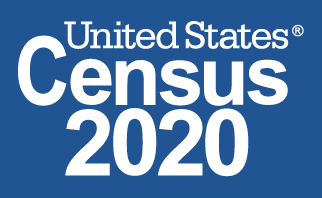
Nebraska is still FIRST in Census responses in our region! Here’s all the latest news from the Census Bureau:
Posted in Books & Reading, Census, Education & Training, General, Information Resources, What's Up Doc / Govdocs
Tagged census
Leave a comment
What’s Up Doc? New State Agency Publications at the Nebraska Library Commission
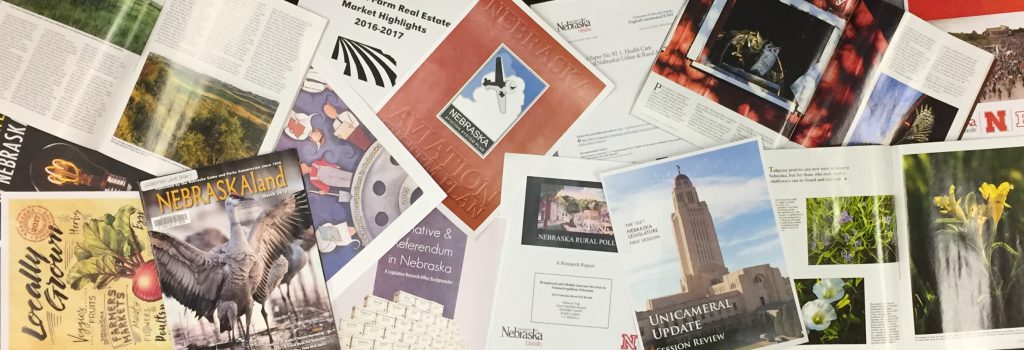
New state agency publications have been received at the Nebraska Library Commission for March and April 2020. Included are annual reports from a variety of Nebraska state agencies, economic development reports from the Nebraska Public Power District, Audit reports from the Nebraska Auditor of Public Accounts, and new books from the University of Nebraska Press, to name a few.
Most items, except the books from the University of Nebraska Press, are available for immediate viewing and printing by clicking on the highlighted link above, or directly in the .pdf below. You can read synopses of the books received from the University of Nebraska Press in the Book Briefs blogposts.
The Nebraska Legislature created the Nebraska Publications Clearinghouse in 1972, a service of the Nebraska Library Commission. Its purpose is to collect, preserve, and provide access to all public information published by Nebraska state agencies. By law (State Statutes 51-411 to 51-413) all Nebraska state agencies are required to submit their published documents to the Clearinghouse. For more information, visit the Nebraska Publications Clearinghouse page, contact Mary Sauers, Government Information Services Librarian; or contact Bonnie Henzel, State Documents Staff Assistant.
Book Briefs: New University of Nebraska Press Books at the Nebraska Publications Clearinghouse

The Nebraska Publications Clearinghouse receives documents every month from all Nebraska state agencies, including the University of Nebraska Press (UNP). Each month we will be showcasing the UNP books that the Clearinghouse receives. UNP books, as well as all Nebraska state documents, are available for checkout by libraries and librarians, for their patrons, in Nebraska.
Here are the UNP books the Clearinghouse received in March and April 2020:
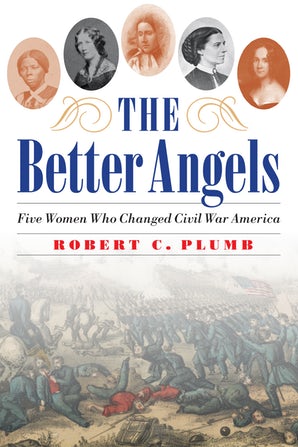
The Better Angels : Five Women Who Changed Civil War America Robert C. Plumb
Harriet Tubman, Harriet Beecher Stowe, Clara Barton, Julia Ward Howe, and Sarah Josepha Hale came from backgrounds that ranged from abject enslavement to New York City’s elite. Surmounting social and political obstacles, they emerged before and during the worst crisis in American history, the Civil War. Their actions became strands in a tapestry of courage, truth, and patriotism that influenced the lives of millions—and illuminated a new way forward for the nation.
In this collective biography, Robert C. Plumb traces these five remarkable women’s awakenings to analyze how their experiences shaped their responses to the challenges, disappointments, and joys they encountered on their missions. Here is Tubman, fearless conductor on the Underground Railroad, alongside Stowe, the author who awakened the nation to the evils of slavery. Barton led an effort to provide medical supplies for field hospitals, and Union soldiers sang Howe’s “Battle Hymn of the Republic” on the march. And, amid national catastrophe, Hale’s campaign to make Thanksgiving a national holiday moved North and South toward reconciliation.

Exodus ‘Gbenga Adeoba (Series: African Poetry Book Series)
Winner of the Sillerman First Book Prize for African Poetry, ‘Gbenga Adeoba’s collection Exodus focuses on forms of migration due to the slave trade, war, natural disasters, and economic opportunities.
Using the sea as a source of language and metaphor, Adeoba explores themes of memory, transition, and the intersections between the historic and the imagined. With great tenderness and power his poetry of empathy searches for meaning in sharply constructed images, creating scenes of making and unmaking while he investigates experiences of exile and displacement across time and place.
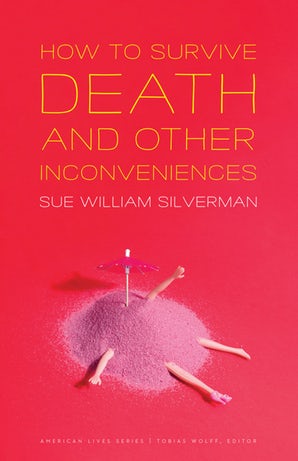
How to Survive Death and Other Inconveniences Sue William Silverman (Series: American Lives)
Many are haunted and obsessed by their own eventual deaths, but perhaps no one as much as Sue William Silverman. This thematically linked collection of essays charts Silverman’s attempt to confront her fears of that ultimate unknown. Her dread was fomented in part by a sexual assault, hidden for years, that led to an awareness that death and sex are in some ways inextricable, an everyday reality many women know too well.
Through gallows humor, vivid realism, and fantastical speculation, How to Survive Death and Other Inconveniences explores this fear of death and the author’s desire to survive it. From cruising New Jersey’s industry-blighted landscape in a gold Plymouth to visiting the emergency room for maladies both real and imagined to suffering the stifling strictness of an intractable piano teacher, Silverman guards her memories for the same reason she resurrects archaic words—to use as talismans to ward off the inevitable. Ultimately, Silverman knows there is no way to survive death physically. Still, through language, commemoration, and metaphor, she searches for a sliver of transcendent immortality.
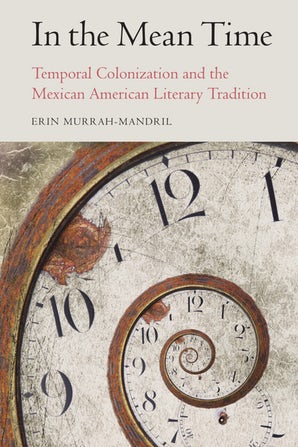
In the Mean Time : Temporal Colonization and the Mexican American Literary Tradition Erin Murrah-Mandril (Series: Postwestern Horizons)
The 1848 Treaty of Guadalupe Hidalgo, which transferred more than a third of Mexico’s territory to the United States, deferred full U.S. citizenship for Mexican Americans but promised, “in the mean time,” to protect their property and liberty. Erin Murrah-Mandril demonstrates that the U.S. government deployed a colonization of time in the Southwest to insure political and economic underdevelopment in the region and to justify excluding Mexican Americans from narratives of U.S. progress. In In the Mean Time, Murrah-Mandril contends that Mexican American authors challenged modern conceptions of empty, homogenous, linear, and progressive time to contest U.S. colonization.
Taking a cue from Latina/o and borderlands spatial theories, Murrah-Mandril argues that time, like space, is a socially constructed, ideologically charged medium of power in the Southwest. In the Mean Time draws on literature, autobiography, political documents, and historical narratives composed between 1870 and 1940 to examine the way U.S. colonization altered time in the borderlands.
Rather than reinforce the colonial time structure, early Mexican American authors exploited the internal contradictions of Manifest Destiny and U.S. progress to resist domination and situate themselves within the shifting political, economic, and historical present. Read as decolonial narratives, the Mexican American cultural productions examined in this book also offer a new way of understanding Latina/o literary history.
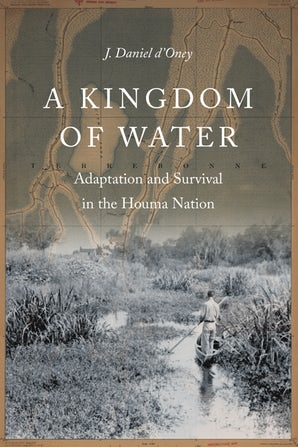
A Kingdom of Water : Adaptation and Survival in the Houma Nation J. Daniel d’Oney (Series: Indians of the Southeast)
A Kingdom of Water is a study of how the United Houma Nation in Louisiana successfully navigated a changing series of political and social landscapes under French, Spanish, British, and American imperial control between 1699 and 2005. After 1699 the Houma assimilated the French into their preexisting social and economic networks and played a vital role in the early history of Louisiana. After 1763 and Gallic retreat, both the British and Spanish laid claim to tribal homelands, and the Houma cleverly played one empire against the other.
In the early 1700s the Houma began a series of adaptive relocations, and just before the Louisiana Purchase in 1803 the nation began their last migration, a journey down Bayou Lafourche. In the early 1800s, as settlers pushed the nation farther down bayous and into the marshes of southeastern Louisiana, the Houma quickly adapted to their new physical environment. After the Civil War and consequent restructuring of class systems, the Houma found themselves caught in a three-tiered system of segregation. Realizing that education was one way to retain lands constantly under assault from trappers and oil companies, the Houma began their first attempt to integrate Terrebonne Parish schools in the early twentieth century, though their situation was not resolved until five decades later. In the early twenty-first century, the tribe is still fighting for federal recognition.

Sacrament of Bodies Romeo Oriogun (Series: African Poetry Book Series)
In this groundbreaking collection of poems, Sacrament of Bodies, Romeo Oriogun fearlessly interrogates how a queer man in Nigeria can heal in a society where everything is designed to prevent such restoration. With honesty, precision, tenderness of detail, and a light touch, Oriogun explores grief and how the body finds survival through migration.
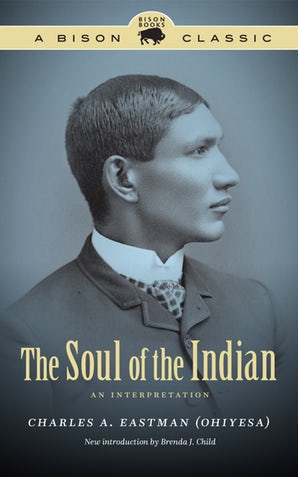
The Soul of the Indian : An Interpretation Charles A. Eastman (Ohiyesa) (Series: Bison Classic Editions)
The Soul of the Indian is Charles A. Eastman’s exploration and documentation of religion as he experienced it during the late nineteenth century. A Dakota physician and writer who sought to bring understanding between Native and non-Native Americans, Eastman (1858–1939) became one of the best-known Native Americans of his time and a significant intellectual figure whose clarity of vision endures today.
In a straightforward manner Eastman emphasizes the universal quality and personal appeal of his Dakota religious heritage. First published in 1911, The Soul of the Indian draws on his childhood teaching and ancestral ideals to counter the research written by outsiders who treated the Dakotas’ ancient worldviews chiefly as a matter of curiosity. Eastman writes with deep respect for his ancestors and their culture and history, including a profound reverence for the environment, animals, and plants. Though written more than a century ago, Eastman could be speaking to our own time with its spiritual confusion and environmental degradation. The new introduction by Brenda J. Child grounds this important book in contemporary studies.
**All synopses courtesy of University of Nebraska Press (https://www.nebraskapress.unl.edu/)
The 2020 Census is Still Going Strong!
2020 Census Infogram
Posted in Census, Education & Training, General, Information Resources, Technology, What's Up Doc / Govdocs
Tagged census
Leave a comment
A Phased Library Reopening Plan
Many Nebraska libraries have closed their buildings to the public during the COVID-19 pandemic; some stopped all physical services completely, and others developed alternative services. The Nebraska Library Commission has put together some guidance of how libraries can begin to reopen their buildings and restore services.
Phased Plan for Reopening Nebraska Libraries
This plan will provide a phased outline of how full services could be restored as the health crisis eases and social distancing measures end. It can be used as a starting point for library directors and their boards to determine the specific course of action their library will take to serve their community during and after the pandemic.
Disclaimer: This document is intended as guidance only. The Nebraska Library Commission does not have the authority to mandate that libraries close or open in any capacity. Library directors should work with their library boards, local government, and local health departments to determine their course of action. Libraries may modify this plan to suit their needs.
We will continue to update this plan as new information is available. See all of our COVID-19 resources for libraries and Nebraskans here: http://nlc.nebraska.gov/libman/pandemic.aspx
Posted in General, Information Resources, Library Management
Tagged coronavirus, covid-19, pandemic, reopening
Leave a comment
OverDrive Data
For today, we are looking at some data as it relates to libraries offering alternative services during the COVID-19 crisis. Specifically, we are looking at a potential shift to electronic resources, in this case, OverDrive. But first, I want to provide a link to the fantastic data that is being put out by the Nebraska Department of Labor. From the DOL main page, I was looking mostly under their resources, then INFOLink pages, for raw data about unemployment statistics and claims. Next, I found their visualizations, which are excellent, and detail unemployment claims by county with maps, and some very illustrative charts. If you have a chance, visit their visualizations HERE.
Now, to OverDrive. From my colleague here at NLC, I got some data about new OverDrive users, and OverDrive circulations. I was curious to see if there was a correlation between new users and circulations as many libraries shut down operations or offered modified services, such as curbside pickups. The first graphic illustrates libraries with new OverDrive users, and the total number of new users, for the weeks beginning in January, 2020:
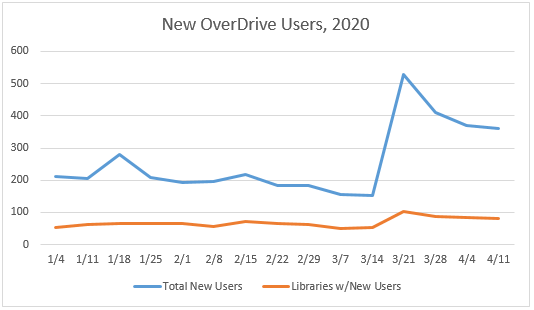
As the chart illustrates, there was a spike during the week of March 14 – 21, then a leveling off. Next, I looked at OverDrive circulations, and you guessed it, they increased:
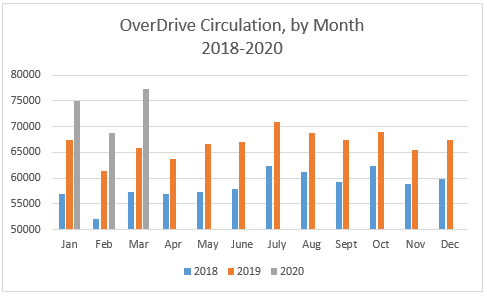
But wait. There’s more to this chart. For this one, I visualized the data from the previous 2 years, 2018 and 2019. If we look at March, we see the large spike in OverDrive circulations from 2019 to 2020, but it helps to put this in perspective. Between March, 2018 and March, 2019, circulations increased at a rate of 15.07%. From March, 2019 to March, 2020, circulations increased at a rate of 17.33%. So a slightly higher percentage of circulation growth compared to the prior year. For February, the 18-19 increase (17.98%) was higher than the 19-20 increase (12.15%). April data might be the telling point to look at, and I intend to post about that when it becomes available.
Getting Started with NebraskAccess
Learn more about using NebraskAccess databases and share this information with all of your library users!
NebraskAccess provides Nebraska residents with free 24/7 access to premium databases containing thousands of full text popular magazine and journal articles; primary source documents; genealogical, health, legal, small business, and science resources; reading recommendations; and research resources for K-12 students. These resources are available to Nebraska residents at no cost. The Nebraska Library Commission purchases subscriptions for Nebraskans with funding from the State of Nebraska and the U.S. Institute of Museum and Library Services.
NebraskAccess also offers ALL site visitors access to a directory of topically-arranged websites evaluated and compiled by Nebraska Library Commission reference librarians, and links to full text Nebraska state government publications and digitized Nebraska historical resources.
Posted in Education & Training, General, Information Resources
Tagged Databases, NebrasAccess, Nebraska
Leave a comment
2020 Census Operational Adjustments

The 2020 Census is underway and more households across America are responding every day. Over 70 million households have responded to date, representing over 48% of all households in America. In light of the COVID-19 outbreak, the U.S. Census Bureau is adjusting 2020 Census operations in order to:
• Protect the health and safety of the American public and Census Bureau employees.
• Implement guidance from federal, state and local authorities.
• Ensure a complete and accurate count of all communities.
The Census Bureau temporarily suspended 2020 Census field data collection activities in March. Steps are already being taken to reactivate field offices beginning June 1, 2020, in preparation for the resumption of field data collection operations as quickly as possible following June 1.
In-person activities, including all interaction with the public, enumeration, office work and processing activities, will incorporate the most current guidance to promote the health and safety of staff and the public. This will include recommended personal protective equipment (PPE) and social distancing practices.
Once 2020 Census data collection is complete, the Census Bureau begins a lengthy, thorough and scientifically rigorous process to produce the apportionment counts, redistricting information and other statistical data products that help guide hundreds of billions of dollars in public and private sector spending per year.
In order to ensure the completeness and accuracy of the 2020 Census, the Census Bureau is seeking statutory relief from Congress of 120 additional calendar days to deliver final apportionment counts.
Under this plan, the Census Bureau would extend the window for field data collection and self-response to October 31, 2020, which will allow for apportionment counts to be delivered to the President by April 30, 2021, and redistricting data to be delivered to the states no later than July 31, 2021.
Posted in Census, Education & Training, General, Information Resources, Technology, What's Up Doc / Govdocs
Tagged census
Leave a comment
American Democracy Project–Video Contest to Promote the 2020 Census
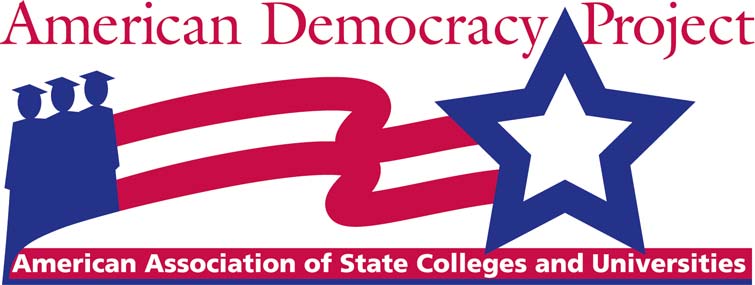
When: April 08, 2020 – April 24, 2020
Time:01:00 PM – 05:00 PM:
The American Democracy Project is sponsoring a video contest to promote awareness for the U.S. Census! Prizes will be awarded to 1st, 2nd, and 3rd place entries; all videos will be judged on accuracy, creativity, and use of visuals/sound. All entries should be submitted to adp@unk.edu by April 24, 2020.
For more instructions, visit https://docs.google.com/document/d/1z3uFwe4jtJgN25Ju2CAE-ovybZ-8UdMIvMFmfEtXrU8/edit?usp=sharing.
Good luck!
Contact:Lydia Behnk
(402) 843-6801
behnkll@lopers.unk.edu
Posted in Census, Education & Training, General, Information Resources, Programming, Technology, What's Up Doc / Govdocs
Tagged census
Leave a comment
CCC Library Information Services Classes

Central Community College announces classes for the Library and Information Services program for Fall 2020.
Registration opens April 14, 2020 for classes beginning August 17, 2020. All classes are online and can be applied to a Central Community College Associate Degree.
See details of classes and registration information at: https://www.cccneb.edu/library/
Friday Reads: The Other Family, by Loretta Nyhan

“With a dissolving marriage, strained finances, and her life in flux, Ally Anderson longs for normal. Her greatest concerns, though, are the health problems of her young daughter, Kylie. Symptoms point to a compromised immune system, but every doctor they’ve seen has a different theory. Then comes hope for some clarity.
It’s possible that Kylie’s illness is genetic, but Ally is adopted. A DNA test opens up an entirely new path. And where it leads is a surprise: to an aunt Ally never knew existed. She’s a little wild, very welcoming, and ready to share more of the family history than Ally ever imagined.
Coping with a skeptical soon-to-be-ex husband, weathering the resistance of her adoptive mother, and getting maddeningly close to the healing Kylie needs, Ally is determined to regain control of her life. This is her chance to embrace uncertainty and the beauty of family – both the one she was born into and the one she chose.” (Audible)
This book caught my eye because I too was adopted, and as usual, I read and listened to it. I was caught up immediately in the story, and while there are some minor problems with the editing of the audio version, it still held my attention from start to finish.
There are many different ways, and reasons why, adoptees search for their biological families. In Ally’s case, she is desperately looking for answers to explain her daughter’s life-threatening allergic reactions. Ally is so desperate in fact, that she turns to an alternative approach: meditation and desensitization therapy. Through all of the anxiety and uncertainty regarding Kylie’s new treatment, Ally finds not only her “other family,” but her inner strength. That strength helps her resolve issues with her ex, her mom, and her ability to move forward with her life.
Definitely a good read!
Online Storytimes To Share With Your Littlest Patrons

Storytime is a beloved library tradition for many of our youngest patrons and their parents. With libraries closing their doors to in-person gatherings, many storytimes are going online. We are rounding up resources to help you find online storytimes or create your own.
Many publishers are relaxing their permissions during the COVID-19 pandemic to allow books to be read aloud online, in addition to the numerous authors and celebreties sharing videos of themselves reading.
Please visit our new page for links to read-alouds and publisher information, plus sources of free ebooks and audiobooks for all ages. If you have additional resources we should list, please let us know!
Read Online: http://nlc.nebraska.gov/libman/readonline.aspx
Photo by John Schnobrich on Unsplash.
Posted in Books & Reading, General, Information Resources, Library Management, Programming
Tagged Children, ebooks, families, publishers, read aloud, storytime
Leave a comment
Today, April 1st, 2020, is CENSUS DAY!

The official Census Day for the 2020 Census has finally arrived!
PLEASE respond to your invitation to participate in the 2020 Census!
Even though we are living in a different time right now, it is still vitally important that we all respond to the Census. For the next 10 years the results from the 2020 Census will determine how billions of dollars will be distributed back to the states, and how local, state, and federal government will be affected.
You can respond online, mail, and phone–so PLEASE respond to the 2020 Census today!
Posted in Census, General, Information Resources, Technology, What's Up Doc / Govdocs
Tagged census
Leave a comment
A History of the Census in the United States : Part 23
The Twenty-Third Census: Census Day was April 1, 2010.

Enumeration
The 2010 census questionnaire was one of the shortest in history – asking just 10 questions of all households in the United States and Island Areas related to name, gender, age, race, ethnicity, relationship, and whether you own or rent your home. Collection of data about education, housing, jobs, etc. collected by previous censuses long-form questionnaires are now collected by the U.S. Census Bureau’s annual American Community Survey.
In addition to the reduced number of questions, the Census Bureau announced it would count same-sex married couples in June 2009. When noting the relationship between household members, same-sex couples who are married could mark their spouses as being “Husband or wife”, the same response given by opposite-sex married couples. An “unmarried partner” option was available for couples (whether same-sex or opposite-sex) who were not married.
Marketing and Promotional Efforts
Following the success of Census 2000’s advertising, the 2010 census featured a $133 million, 4-month advertising campaign. Although officially beginning January 18, 2010, the advertising campaign debuted the night of January 17 during NBC’s Golden Globe Awards broadcast.
In total, the 2010 advertising campaign included television, radio, print, outdoor and the Internet advertising, produced in an unprecedented 28 languages. More than half of the budgeted advertising would target media consumed by minority and ethnic audiences. The Census Bureau anticipated that the campaign would reach the average person 42 times with messages about the importance of participating in the census.
From Super Bowl XLIV and the 2010 Winter Olympics, to popular primetime shows, the 2010 Census advertising campaign represented the most extensive and diverse outreach campaign in U.S. history. The advertising rollout also included updates on other outreach efforts, such as the Census in Schools program, “Portrait of America” Road Tour, and the national and regional partnership programs targeted at reaching hard-to-count populations.
Other key elements of the 2010 Census Integrated Communications Campaign included:
- A national road tour with 13 vehicles traveling to key events across the country, such as NASCAR races, the Super Bowl, and parades.
- A 2010 Census Web Site.
- “Teach Census Week” in schools nationwide in February, part of the Census in Schools program.
- Nationally broadcasted public service announcements airing nationwide.
- Outreach activities launched by national and local corporate, foundation, government, and nonprofit organizations.
Key 2010 Census Dates
September 26, 2005 – The Census Bureau awards a $500+ million contract to the Lockheed Martin Corporation for the 2010 Census Decennial Response Integration System (DRIS).
September 6, 2007 – The Census Bureau awarded its 2010 Census communications contract, worth an estimated $200 million, to Draftfcb of New York.
March 30, 2009 – The Census Bureau launches a massive operation to verify and update more than 145 million addresses as it prepares to mail out 2010 census questionnaires.
July 23, 2009 – The Census Bureau began printing 2010 Census questionnaires.
October 26, 2009 – The Census Bureau launches the 2010 Census Web Site.
January 17, 2010 – First 2010 Census television advertisement airs during NBC’s Golden Globe Awards broadcast.
January 18, 2010 – The 2010 census advertising campaign officially launches.
January 25, 2010 – Remote Alaska enumeration begins.
March 1, 2010 – 2010 census questionnaires begin arriving in mailboxes throughout the United States and Island Areas.
March 8, 2010 – Advance letters are mailed to 120 million addresses nationwide, notifying households that 2010 Census forms will be arriving March 15 -17.
April 1, 2010 – Census Day. Households are asked to supply data in their census questionnaire that is accurate as of April 1.
April 30, 2010 – Enumerators begin door-to-door operations to collect census data from households to follow up with households that either didn’t mail back their form or didn’t receive one.
July 30, 2010 – The toll-free telephone assistance line is closed, ending 2010 census data collection. More than 130,000 interviews were completed via the toll-free line.
August 10, 2010 – The Census Bureau announces that it will return $1.6 billion to the U.S. Treasury as a result of lower-than-expected census costs.
October 21, 2010 – The final 2010 census mail response rate is announced as 74 percent – matching Census 2000’s rate.
December 21, 2010 – The Census Bureau announces the 2010 population counts and delivers the apportionment counts to the president.
Further Information
- “The 2010 Decennial Census: Background and Issues,” Congressional Research Service, February 3, 2011.
Information provided from Census.gov
Posted in Books & Reading, Census, Education & Training, General, Information Resources, What's Up Doc / Govdocs
Tagged census
Leave a comment

